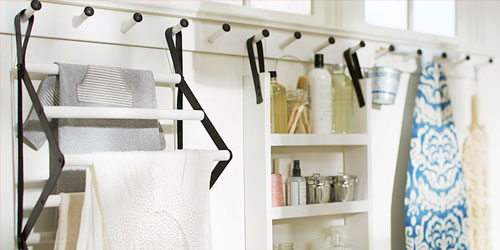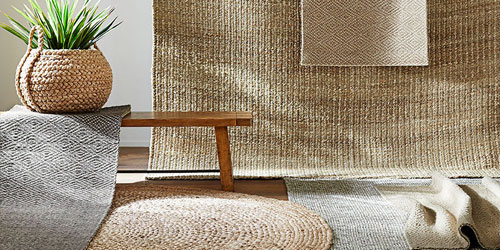How to
Host an Easter Brunch

The egg, quintessential symbol of spring, is the subject of our Easter brunch that makes an art of decorating it, displaying it and eating it with style. Rest assured if egg decorating is something you haven't tried since childhood, our Pottery Barn stylists demonstrate upscale craft techniques that yield beautifully sophisticated results. Decorating stations bring out guests' creativity, and our "Eggalabra" turns their freshly finished eggs into a dramatic display. The party culminates in a smoke-infused brunch that highlights eggs, star of any morning meal, in a menu by Chef Joey Altman. Friends, feasting and fun activities easily bring out the kid in all of us. That's a great way to begin the season of abundance and rebirth.

Setting Up
What we used to think of as kid holidays have grown up into refined affairs with adult appeal. Minus the egg hunt and marshmallow bunnies, Easter celebrations are free to take on elegant menus and greater themes, symbolized by the noble egg and fertile rabbit. We called upon some Pottery Barn stylists and artists to show you how to depict nature, beauty and the rites of spring on the blank white canvas of the egg. Making natural vegetable dyes, hand painting, and playing with découpage are fun, flexible techniques that can be as simple or challenging as you like. (See the Egg–decorating Instructions below.)
In your invitation, tell guests to come with their inner artist ready for a creative session of egg decorating. You'll need to visit a craft store for enough supplies for three decorating stations. Set up three small tables with easy–to–clean cloth or newspaper, printed instructions and supplies. This allows you to prep and set the dining table meal while guests play elsewhere. Afterwards, everyone can put their finished creations on the Eggalabra for display as an Easter centerpiece. Add baskets lined with soft material where any extra eggs can nest.
The cooks are in the kitchen getting creative, too. A new kitchen toy known as the Smoking Gun™ quickly infuses the salmon, roasted red peppers and bacon hollandaise sauce with natural smoky flavor on the spot without the heat. The recipes introduce fun new cooking techniques for an engaging group activity. (See Recipes section.)
Finally, set the finished dishes on the buffet along with bottles of sparkling wine and orange juice that can be mixed for mimosas. A dining table featuring Easter–themed plates, accessories and serving dishes — plus the beautiful Eggalabra — define the special occasion and lend color, texture and ambiance to the meal.

Egg Decorating Instructions
Most of these techniques work with either hard–boiled eggs or blown–out eggs whose contents have been emptied. Consult online tutorials or search "how to blow out eggs" for instructions.
Supplies:
A selection of vegetables and fruits to make the dye
A selection of leaves and flowers, either real or stickers, as motifs
Hard–boiled or blown–out eggs
To make natural vegetable dyes:
1. Choose your colors and vegetables. We used purple cabbage, blueberries, spinach and red onion skin. Look online for other vegetables, fruits, herbs and flowers you can use for dyeing.
2. Chop up each of the vegetables into small to medium pieces. Put each vegetable in a separate pot, doubling the amount of water to vegetable ratio. Bring to a boil then lower to a simmer for one hour. Boil longer for stronger color.
3. Pour through a strainer, saving the liquid which is now ready to be used as dye. The dye will last about a week refrigerated.
Dyeing and decorating eggs:
1. Either hard–boil or blow–out eggs. Hardboiled eggs should be cooled so that the heat won't affect the dye.
2. Select the leaves and flowers for making impressions. Press them overnight to get them to lay flat on the eggs. Position the motif on the egg and put the egg in a clean, cut–off nylon stocking. Tightly and smoothly tie off the end to make sure the dye doesn't seep under the motif. Alternatively, you can use a leaf– or flower–shaped sticker that pulls off easily.
3. Put the eggs into the dye bath. The color will deepen the longer you leave the eggs in the bath. Varying shades can be achieved by steeping for different lengths of time. Liquid will eventually seep under the motif whose edges will become fuzzy. Experiment to find the perfect balance. For blown–out eggs, place a lid or cup over the egg in the bath to hold it under the liquid.
4. Remove the eggs from the bath, cut off the stocking and let dry.
Hand Painted Silhouette Eggs
Painting with acrylic paint yields more saturated colors than dyed eggs. It also lets you get creative with hand painting, drawing and craft techniques like stenciling and stamping.
Supplies:
Acrylic paint
Small paint brushes
Blow dryer
Hard–boiled or blown–out eggs
Variety of craft supplies, like acrylic paint pens, pencils, stencils, craft punch, thin masking tape, small scissors, Exacto knife or ribbon
Paint the entire egg and let it dry. Draw a silhouette by hand with a pencil, or alternatively make a stencil with an Exacto knife, stamp or punch.Use an acrylic paint pen to clearly define the outlines and fill in the outlines with paint.
Découpage Eggs
Using blown-out eggs is best here, since these graphic eggs are wrapped entirely in paper and sealed with glue.
Supplies:
Blown Eggs
Modge Podge brand all–in–one sealer, glue and finish
A selection of newsprint images
Scissors
A small bowl for glue
A small paint brush for applying glue
Cookie drying rack
1. Cut out selected images and words from catalogs or newspapers
2. Place larger pieces around the egg by painting the back of the paper and place on the egg. Carefully press the paper around the egg, smoothing out corners, bubbles and ripples with your fingers while the glue is still wet.
3. Once the larger pieces are in place, the smaller images can be used to fill in the negative spaces.
4. Continue adding imagery and typography until the egg is completely covered.
5. Dry the eggs on the drying rack.


